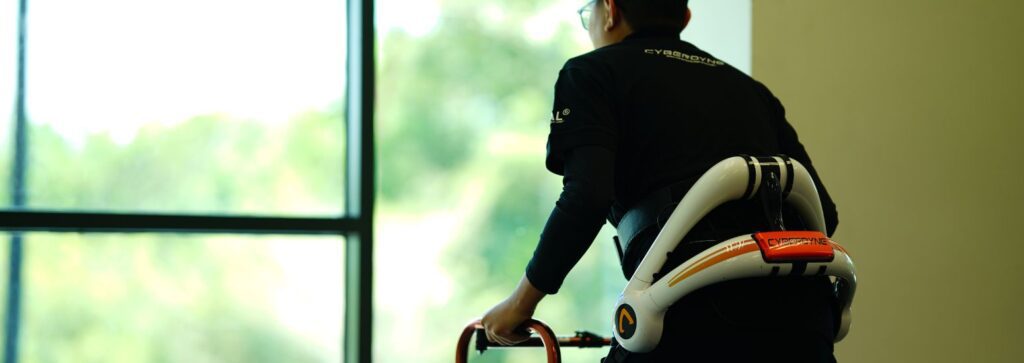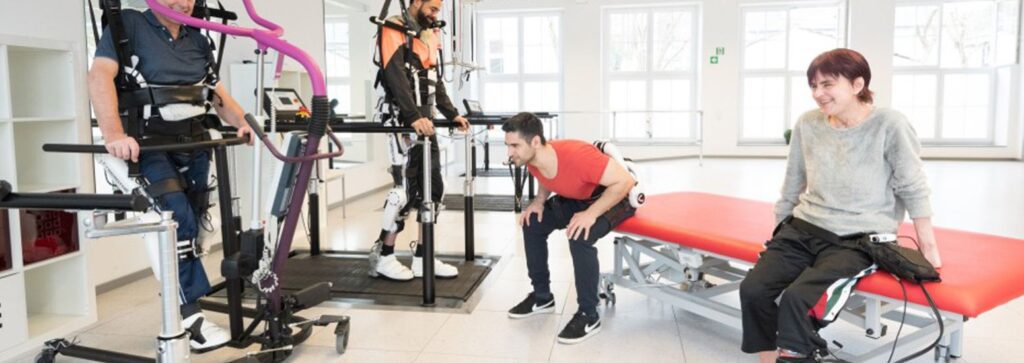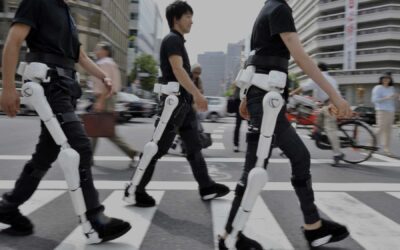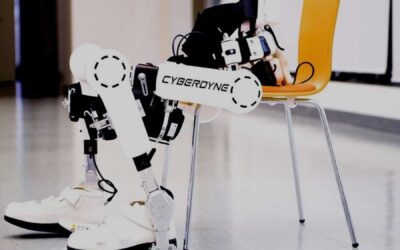In 2009, the Japan Institute of Invention and Innovation awarded the Invention of 21st Century Award to the Cyborg-type Robot – HAL, (Japanese Patent).
Hybrid Assistive Limb [HAL] is the first technology in the world to enhance, support, improve, and regenerate the wearer’s physical functions based on the wearer’s intentions.
The wearable cyborg HAL Treatment

The wearable cyborg, HAL, enables users to control body movements using their mind. By utilising a setting akin to an electroencephalogram, the artificial limb can transmit signals from the patient’s brain to the nerves beneath the skin and interpret these signals as commands.
Not only does HAL assist in movement, but it also interprets your intentions, enabling natural movement with motor support while relieving pressure on the lumbar disk. The motor torque can be adjusted based on the user’s thoughts using bioelectric signal sensing technology. HAL has a wide range of applications, including helping individuals experiencing lower back pain from injury, ageing, or physically demanding jobs by reducing musculoskeletal strain. This process gradually restores the nerves responsible for voluntary movements, eventually allowing patients to regain the ability to walk independently.
Treatment to Improve Wearer’s Function:
The desired movements are performed by HAL using “bio-electrical signals” detected from the wearer’s voluntary commands, thereby enhancing the physical function of the limbs.

When an individual attempts to move, the brain sends nerve signals to the muscles through motor neurons, initiating movement in the musculoskeletal system, including the joints. Prior to the movement, subtle “bio-electrical signals” indicative of the person’s intention are emitted onto the skin’s surface. HAL can detect and interpret this signal, subsequently controlling the power unit to support joint movement in synchronisation with the individual. Through the utilisation of HAL, which harnesses the bio-electrical signal representing the wearer’s intended motion, interactive biofeedback is encouraged within and outside the body, involving HAL, the brain, the nervous system, and the muscular system.
The Cyberdyne Treatment utilises interactive bio-feedback theory as its foundation. Clinical application has shown that this treatment method effectively enhances the functions of the lower limb, upper limb, and body trunk.
Recovery from Robots
Rehabilitation robots play a crucial role in physical therapy by significantly increasing the frequency of patients’ exercise sessions, which is essential for improving physical function.
These robots assist therapists in ensuring that exercises are executed correctly and can also help in bearing the patient’s body weight, enabling longer participation in therapy sessions without fatigue.
They are capable of tracking progress and offering objective evaluation and reporting, thus supporting the overall assessment process.
Rehabilitation robots contribute to creating a motivating environment within the realm of physical therapy.
Our Patient Testimonial:
“I am experiencing greater mobility than ever after undergoing the Cyberdyne Treatment! After today, I will no longer need to walk with Cyberdyne HAL at Brooks Rehabilitation. I have seen significant clinical progress compared to when I first began. I am grateful for the increased confidence in standing and the improved physical strength and endurance. This entire experience has had a profound and positive impact on me.” – Samantha
Connect with Cyberdyne at https://rehabmodalities.com/ for a demo of our treatment plans.



